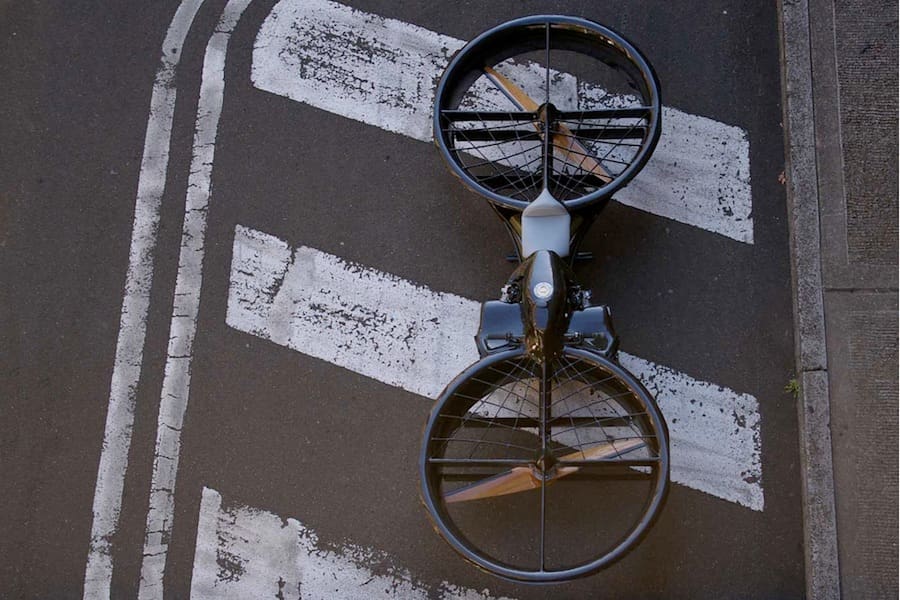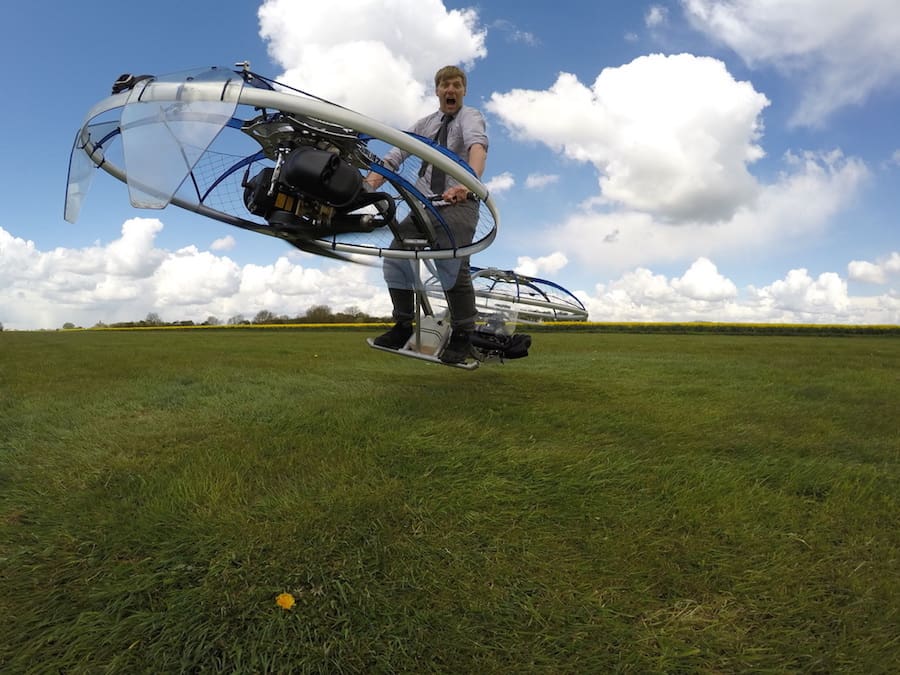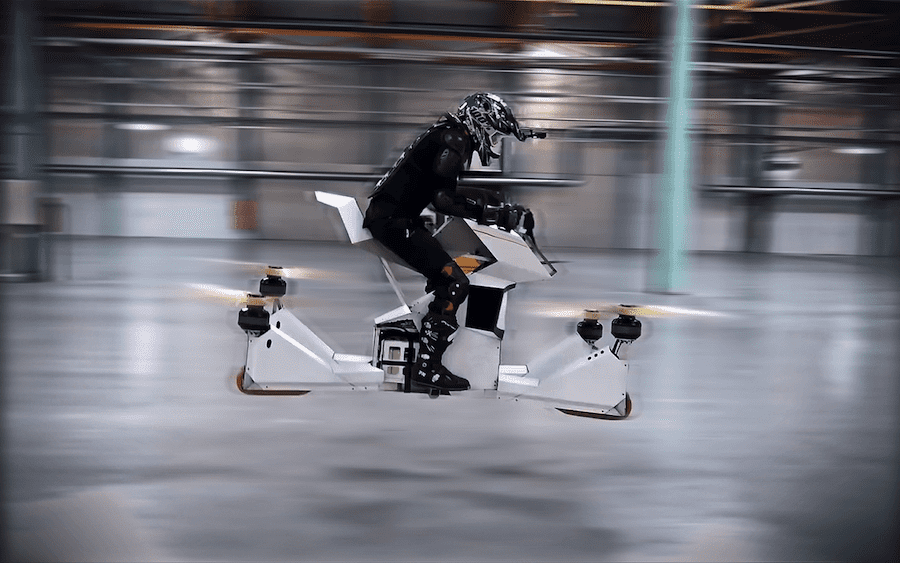Hoverbikes aren’t a new phenomenon.Humans have been obsessed with making things fly since well before the Wright brothers made their historic and first powered flight in 1903, and motorcycle-loving flight-obsessed humans are no different.
Many will argue that machines that fly have no place in a motorcycle magazine (and they’re probably right), but in the case of a hover bike there are more similarities than you might first think. Because really, if you’re straddling the machine like a motorcycle and you’re using handlebar-mounted controls to accelerate, brake and steer a powered vehicle, does it really matter that there’s no wheels, no suspension or no poorly maintained roads necessary to get your riding fix? These blokes don’t seem to think so.
Malloy Aeronautics’ Hoverbike
Back in 2014, well before the, um, rise of drones, British-based firm Malloy Aeronautics unveiled a pretty convincing hover bike. It used two timber propellers horizontally mounted at the front and rear of the vehicle and both were powered by a centrally located boxer engine. While the original prototype has since evolved into an electric-powered quadcopter affair that can be controlled manually or set to fly autonomously, Malloy Aeronautics first design was the beginning of the flying motorcycle concept that was both effective and convincing in its design and execution.
“We combined the freedom of a helicopter with the simplicity of a motorcycle to create the world’s first hover bike,” the company said at the time.

Colin Furze’s homemade hoverbike
We all remember that crazy British bloke’s surprisingly successful attempt at building a hover bike in his backyard shed about 12 months ago. Sure, it wasn’t as crazy as some of his other creations (the jet-powered bicycle, the flame-throwing scooter or the world’s longest motorcycle, for example), but it worked. He used a pair of two-stroke Parajet engines, usually employed in a paraglider, which each produced around 70kg of thrust. These were mounted horizontally so they were pushing against the ground, and Furze sat atop of the machine and controlled the bike’s direction using only his body weight. Speaking of weight, it turned out to be a bigger influence than he though. “Even taking my keys out of my pocket makes a noticeable difference,” he said at the time.

Hoversurf’s Scorpian-3
The most recent hover bike to hit our news feeds is the work of Russian-based brand Hoversurf. It uses four electric powered propellers mounted in a quadcopter-style arrangement and a motorcycle seat mounted in the centre provides the cockpit for the rider. The handlebar controls are vertically mounted, rather than horizontally, and the lack of protection around the blades is a little worrying, but at least the rider is wearing a full motocross-style get-up if it gets out of control.
“We dedicated a lot of resources and efforts achieving the unit’s size, and shape resembles a compact dirt bike,” the firm says on its website. What started as a crowdfunding campaign is now a product available for pre-order and while there’s no price listed, we can’t imagine it’d be cheap.

by Kellie Buckley